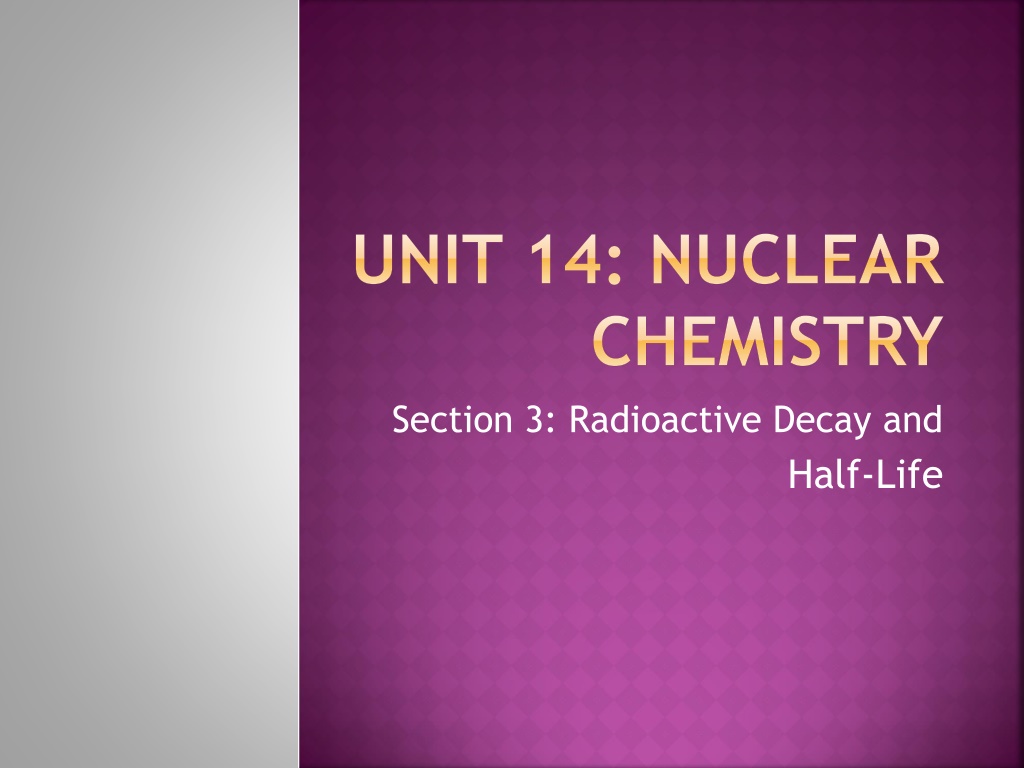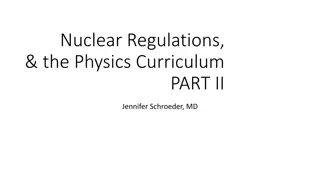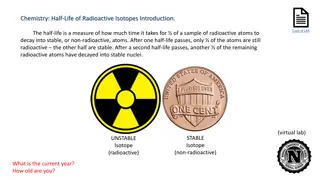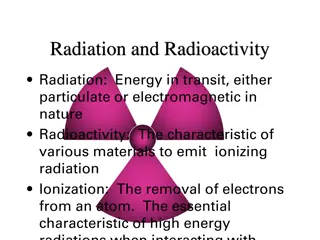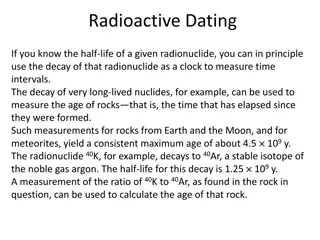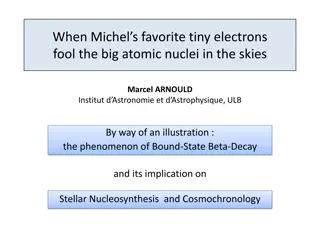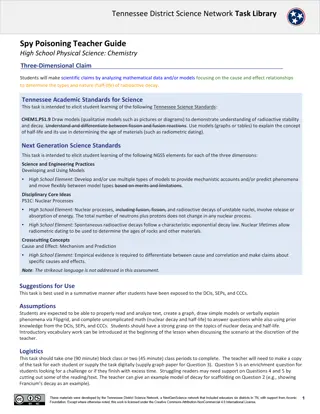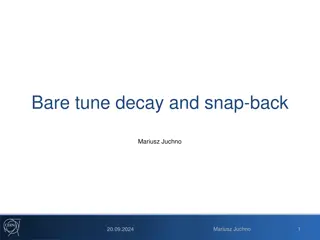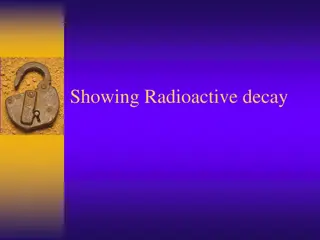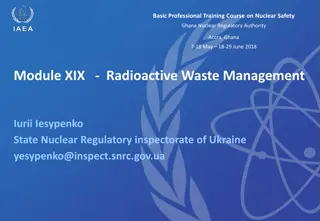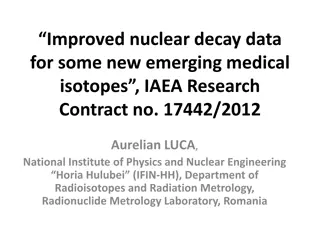Understanding Radioactive Decay and Half-Life in Nuclear Chemistry
Exploring the concept of radioactive decay and half-life in nuclear chemistry, this content covers the types of nuclear radiation, alpha decay of Uranium, and the significance of half-life in determining the decay of radioactive substances such as Carbon-14. An example with Fluorine-18 illustrates the calculation of remaining material after a specific time, highlighting the practical application of these concepts.
Download Presentation

Please find below an Image/Link to download the presentation.
The content on the website is provided AS IS for your information and personal use only. It may not be sold, licensed, or shared on other websites without obtaining consent from the author. Download presentation by click this link. If you encounter any issues during the download, it is possible that the publisher has removed the file from their server.
E N D
Presentation Transcript
UNIT 14: NUCLEAR CHEMISTRY Section 3: Radioactive Decay and Half-Life
RADIOACTIVE DECAY The spontaneous emission of rays or particles from certain nuclei as they decay, such as Uranium. These rays or particles are called nuclear radiation. They come in three types: Alpha Radiation: Helium nucleus; 2+Charge; Low power (0.05 mm body tissue) Beta Radiation: electron; 1-Charge; Moderate power (4 mm body tissue) Gamma Radiation: electromagnetic wave; neutral charge; High Power (penetrates entire body easily)
HALF-LIFE While the process is spontaneous, it is not instantaneous it takes time! The time required for HALF of the atoms of a radioactive substance to decay is called a half-life.
EXAMPLE: FLUORINE-18 18 Fluorine 18 ( F) has a half-life of 110 seconds. This material is used extensively in medicine. The hospital laboratory begins the day with 10 grams of F 9 9 18
HOW MANY HALF-LIVES OF F-18 OCCUR IN 11 MINUTES (660 SEC)? 1 half-life = 110 seconds 660 seconds 110 seconds= 6 half-lives
HOW MUCH OF THE 10-GRAM SAMPLE WOULD BE LEFT AFTER 11 MINUTES? 6 half-lives = 10 divided in half, 6 times 1) 10/2 = 5 grams 2) 5/2 = 2.5 grams 3) 2.5/2 = 1.25 grams 4) 1.25/2 = 0.625 grams 5) 0.625/2 = 0.3125 grams 6) 0.3125/2 = 0.15625 grams After 11 minutes, only 0.16 g of the 10 g sample remain!!!!!!
